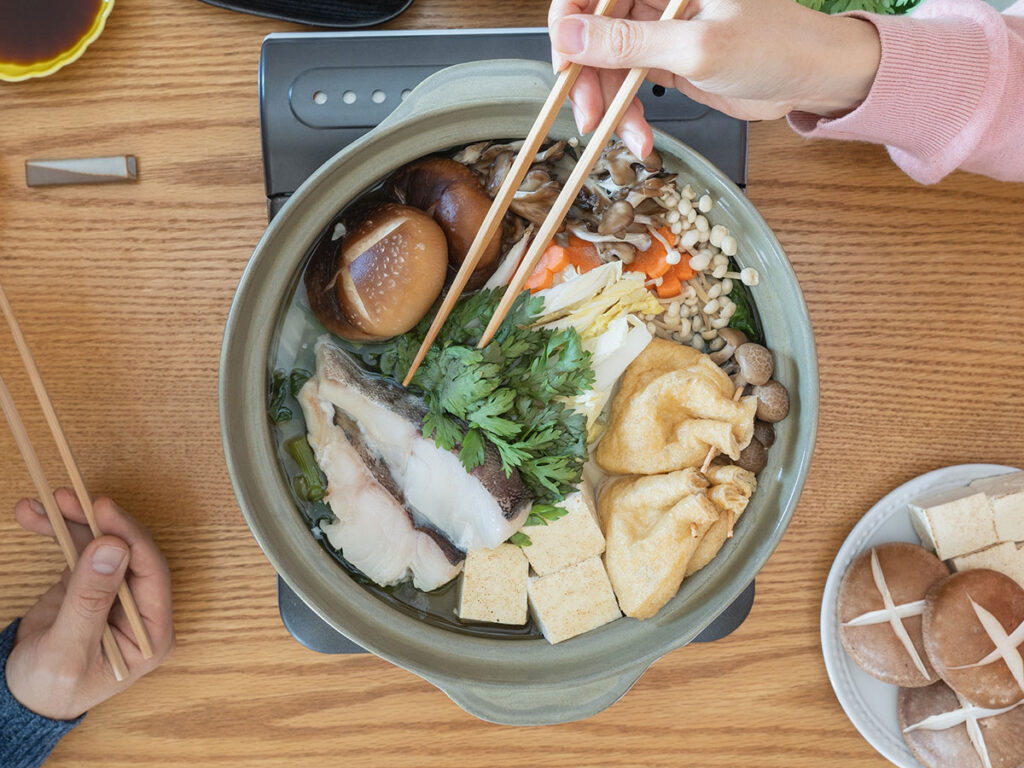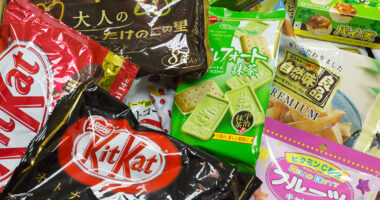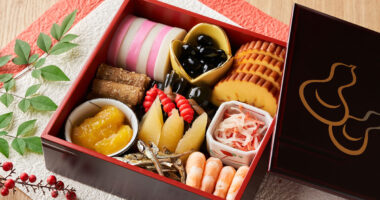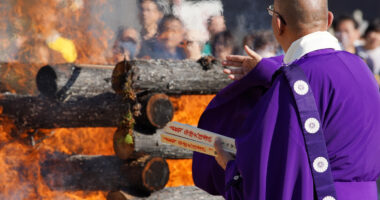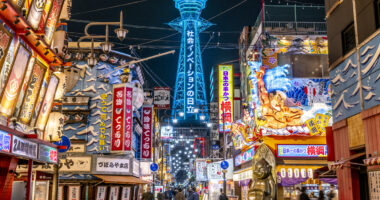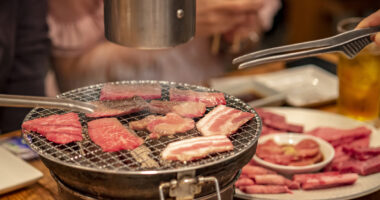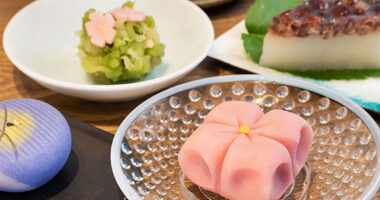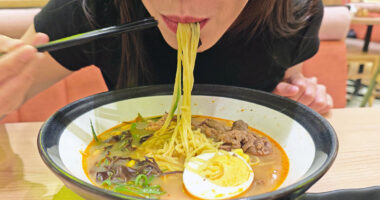Nabe, a representative dish of Japan’s winter food culture, is a comforting meal where fresh ingredients are simmered in steaming hot broth and shared around the table.
It symbolizes Japan’s cultural emphasis on gathering with family and friends, making it a must‑try culinary experience. While Japanese cuisine is already popular in North America and Southeast Asia, truly tasting and understanding nabe requires a visit to Japan.
This article provides a detailed guide for travelers—covering the basics of nabe, popular varieties, and dining etiquette.
What is Japanese nabe?
The word “nabe” refers both to the dish and to the cooking pot. In Japan, nabe is highly popular in winter, both at home and in restaurants. The style is communal—cooking ingredients at the table and enjoying them fresh from the pot.
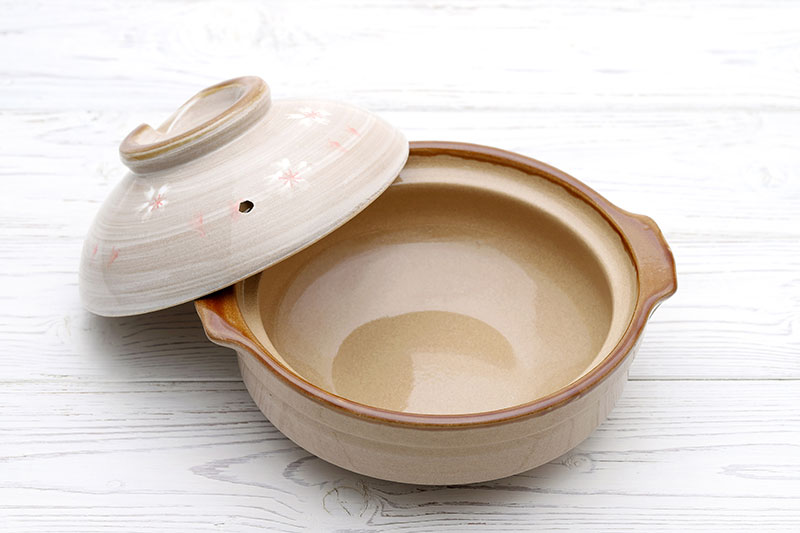
An example of donabe—an earthenware pot commonly used for nabe
Basic elements of nabe
What makes nabe special is the variety of ingredients—vegetables, mushrooms, meat, seafood—all enjoyed together. The broth typically starts with dashi (stock) made from kombu and bonito flakes, seasoned with soy sauce, miso, or salt. From light and simple to rich and layered, the flavor range is wide.
Nabe is more than just a meal. In Japan, the phrase “to gather around the nabe” reflects the cultural importance of sharing a pot and strengthening bonds with family and friends.
Why is nabe so popular?
There are several reasons why nabe is especially loved in winter: warm food keeps the body comfortable in cold weather, and it’s a quick way to prepare a nutritionally balanced meal.
Furthermore, preparing nabe is easy—simply chop ingredients, put them in the pot, and cook! For busy people in modern Japan, it’s a convenient, nourishing go‑to dish.
How to eat nabe and etiquette
Nabe comes with its own eating style and etiquette. Knowing these customs will help tourists experience authentic Japanese food culture.
Basic way to eat nabe
The basic rule is to transfer your favorite ingredients into your small personal bowl. Eating directly from the communal pot is considered impolite. Wait for ingredients to cook, then scoop an appropriate amount into your bowl.
The condiments differ by nabe type: ponzu (a citrus-based sauce), grated daikon radish, yuzu-koshō (a paste of yuzu peel and chili), karashi (Japanese mustard), and shichimi (a seven-spice blend) pepper.
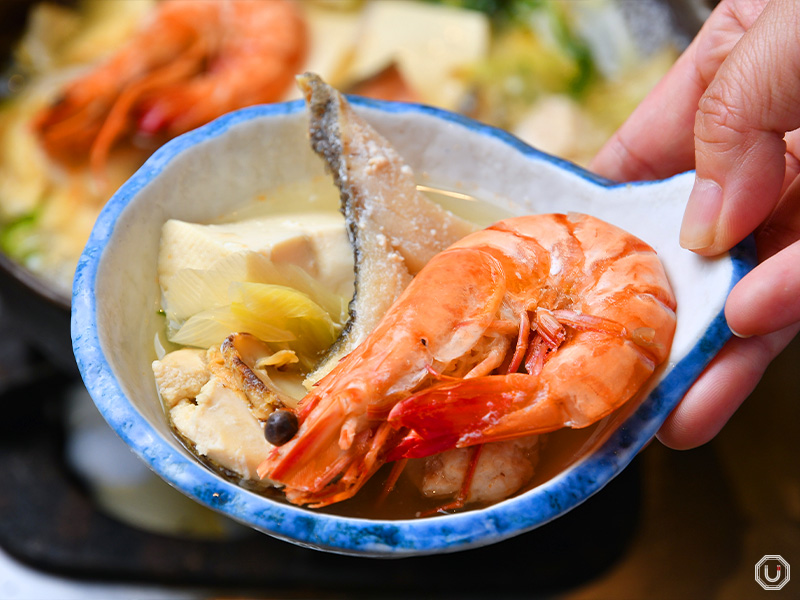
Seafood chanko nabe from Chanko Edosawa
Shime—the hot pot finale
One of nabe’s highlights is the shime, the final dish. After eating the main ingredients, the remaining broth is full of flavor. To savor it, rice, udon (thick wheat noodles), ramen, or egg (resulting in zōsui, a type of rice porridge) is added to the pot and enjoyed to the very last drop.
For zosui, it’s typical to add beaten egg and rice, simmer, then top with nori (dried seaweed) and chopped scallions. This final flourish is considered the true climax of the nabe experience.
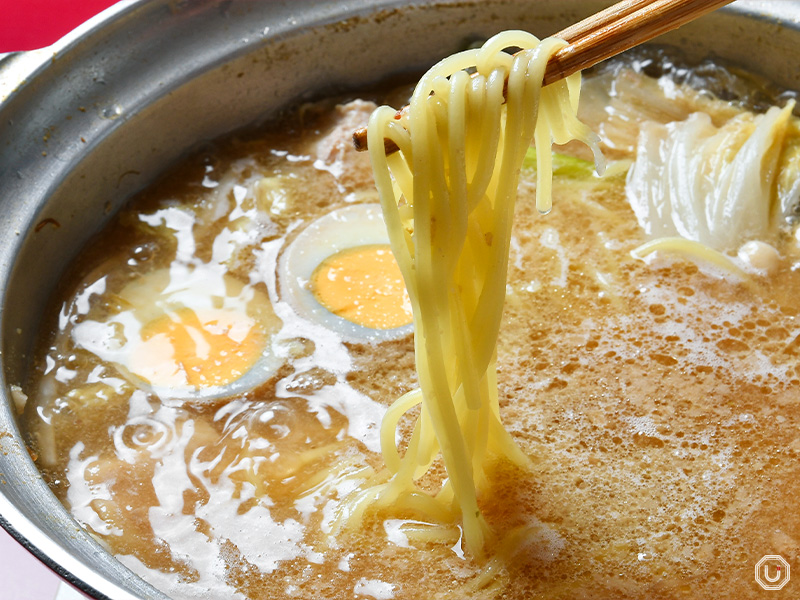
The finishing ramen noodles at Chanko Kirishima
Seven popular nabe types in Japan
Japan offers countless nabe styles. Here are seven especially popular—and traveler‑friendly—types. Each has its own flavor and way of enjoying it, so try as many as you can during your stay.
Yose-nabe
Yose-nabe is the most common and accessible nabe—ideal for beginners. “Yose” means to gather, and that’s exactly what you do: combine various ingredients in one pot.
Typical ingredients: napa cabbage, scallions, carrots, mushrooms, tofu, chicken, pork, seafood—seasonal choices. The broth—made with water, sake, soy, mirin (sweet rice wine), kombu, and bonito dashi—has a gentle taste. The shime is often egg‑and‑rice zosui.

An image of yose‑nabe
Sukiyaki
Sukiyaki is a widely known Japanese hot pot, even abroad. Thin slices of beef or pork are simmered in a sweet‑savory sauce of soy, mirin, and sugar.
The hallmark is dipping cooked meat and vegetables into raw egg before eating. This distinctly Japanese custom mellows the heat and enhances the flavor. Major cities like Tokyo and Osaka have many sukiyaki specialty restaurants offering high-quality wagyū (Japanese beef).
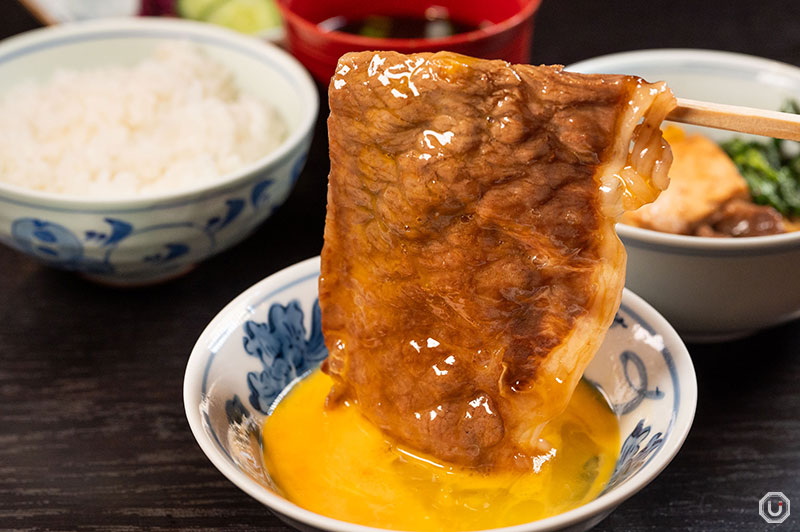
Kuroge Wagyu Sukiyaki Kaiseki at Kioichō Kichiza
Shabu-shabu
Shabu-shabu uses thinly sliced meat quickly dipped in hot water or kombu broth. The name is an onomatopoeia for the “swishing” sound the ingredients make in the pot.
Main sauces are ponzu and sesame sauce—offering both refreshing and rich tastes. When enjoyed with vegetables and tofu, it becomes a well-balanced meal. It’s popular for its pure meat flavor and is enjoyed by locals and tourists alike.
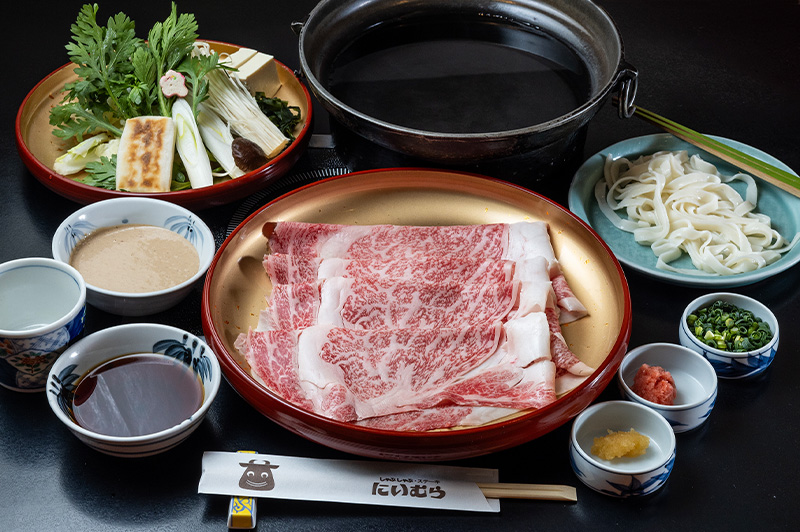
Wagyu Shabu-shabu Set (for one person) at NIIMURA in Shinjuku
Oden
Oden (a fish cake stew) consists of daikon radish, eggs, konnyaku (firm jelly made from konjac yam), fish cakes, potatoes, and more, simmered in a light dashi-soy broth. It’s a winter staple, commonly found even in convenience stores.
The charm of oden lies in each ingredient soaking up the flavorful broth. It’s usually served with a dab of karashi, which provides a sharp contrast to the ingredients’ savory sweetness. At food stalls and specialty shops, you can also find region-specific variations.

Oden types at Oden Kappou Hide
Chanko-nabe
Chanko-nabe is the traditional hot pot known as the staple food of sumo wrestlers. It became popular as a high-nutrition dish to help wrestlers gain weight.
This nourishing pot is filled with vegetables, seafood, and meats, and its broth can range from light to rich. Around Ryogoku Station in Tokyo, many specialty chanko-nabe restaurants are run by former rikishi (sumo wrestlers), offering a way to enjoy both the cuisine and sumo culture.
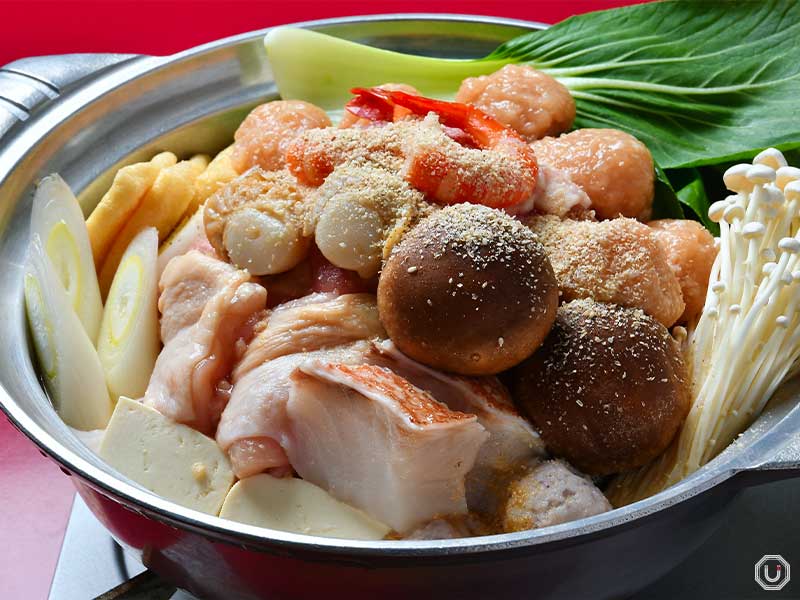
Chanko pot -Taste of Kirishima- (minimum order of 2 servings, photo shows 2 servings) at Chanko Kirishima
Motsu-nabe
Motsu-nabe is a hot pot that uses offal from beef or pork, originating from Fukuoka Prefecture but now enjoyed nationwide.
The broth, typically made from dashi flavored with soy or miso, allows the rich essence of offal to blend beautifully into the soup. The usual finish is to add champon noodles—eating noodles in the flavorful broth is truly exceptional. Vegetables like garlic chives and cabbage are also simmered in for nutrition and balance.
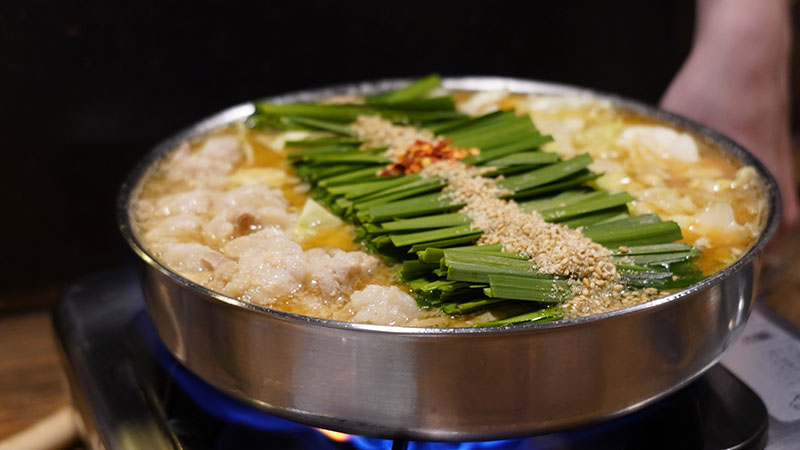
An image of motsu-nabe
Yudōfu
Yudōfu (boiled tofu) is a representative dish of Kyoto: simple yet deeply flavorful. Tofu is warmed in kombu dashi and eaten with ponzu—a rustic and peaceful dish.
The deliciousness of yudofu depends on high-quality tofu and premium kombu broth. In Kyoto, tofu specialty restaurants serve this minimalistic dish with pride. Reflecting Zen spirit, it’s a pure expression of Japanese culinary essence.
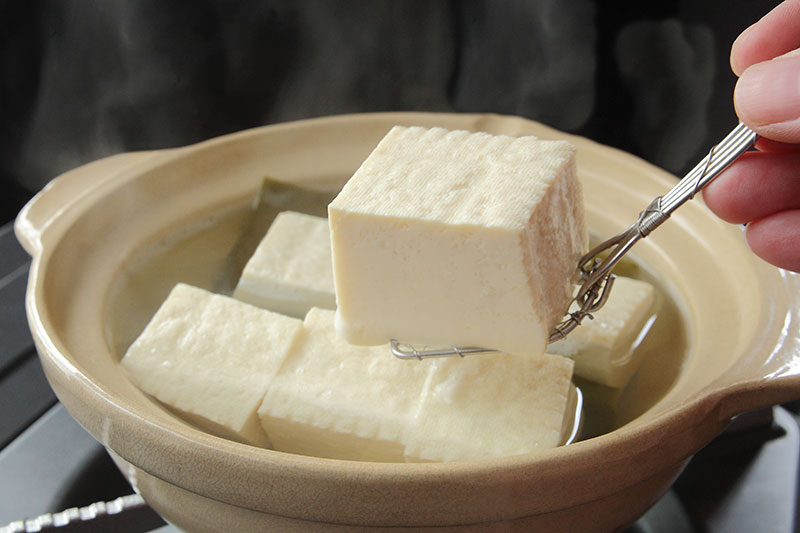
An image of yudofu
Regional nabe varieties
Across Japan, local specialties often appear in regional hot pots. These reflect the region’s ingredients, culture, and history, and eating them offers a deeper travel experience.
Kiritanpo-nabe from Akita Prefecture
Kiritanpo-nabe is a regional dish from Akita Prefecture, featuring grilled rice stick “kiritanpo” simmered with chicken. In broth made from Hinai-jidori chicken, the kiritanpo becomes chewy, with sweet rice flavor.
Root vegetables like burdock, green onions, maitake mushrooms, and seri (Japanese parsley) are added, showcasing Akita’s natural bounty. It’s a must-try regional delight when visiting Akita.
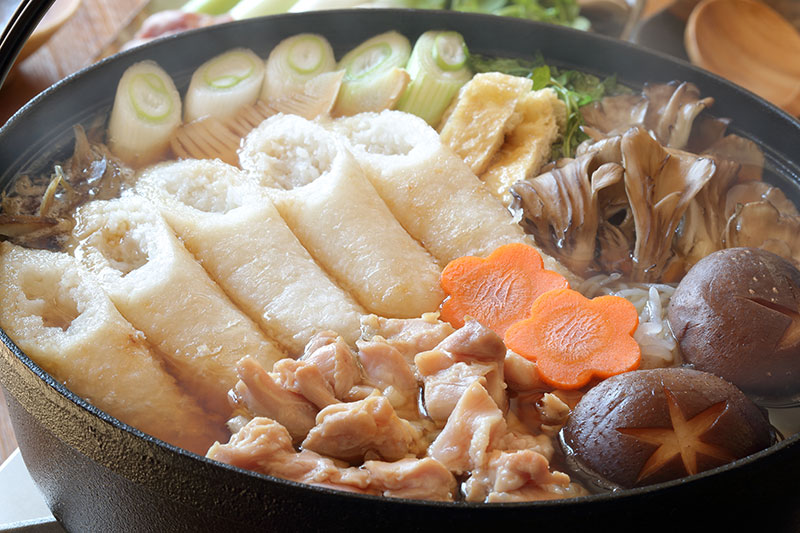
An image of kiritanpo-nabe
Ishikari-nabe from Hokkaido Prefecture
Ishikari-nabe is Hokkaido’s signature hot pot, simmering fresh salmon and vegetables in miso broth. The broth’s rich flavor comes from using not just the salmon flesh but the bones as well.
Ishikari-nabe lets you enjoy both the gifts of Hokkaido’s sea and land. With potatoes, carrots, cabbage, and corn—all Hokkaido-grown—the dish celebrates regional abundance.
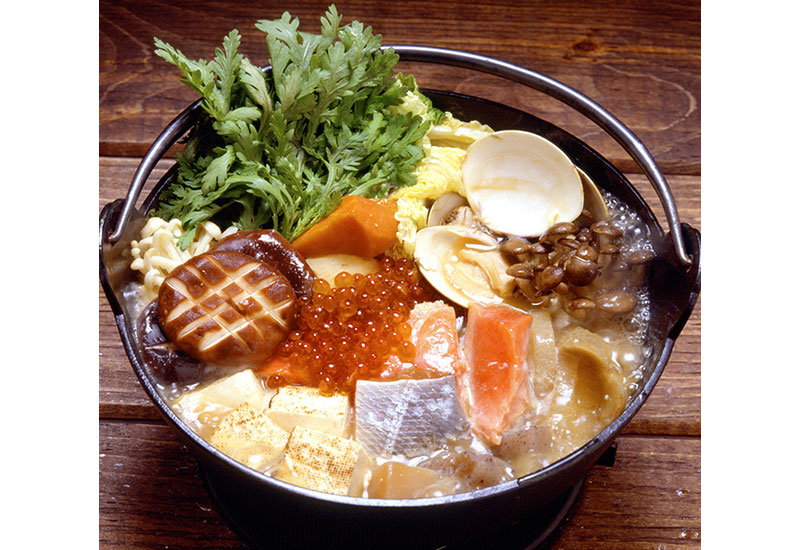
An image of Ishikari-nabe
Mizutaki from Fukuoka Prefecture
Fukuoka’s mizutaki features a clear chicken broth base. Chicken is simmered long to create a collagen-rich, sometimes cloudy soup.
It’s commonly eaten with ponzu or momiji-oroshi (grated daikon with chili), highlighting pure chicken flavor. Fukuoka offers numerous mizutaki specialty restaurants competing with their signature versions.
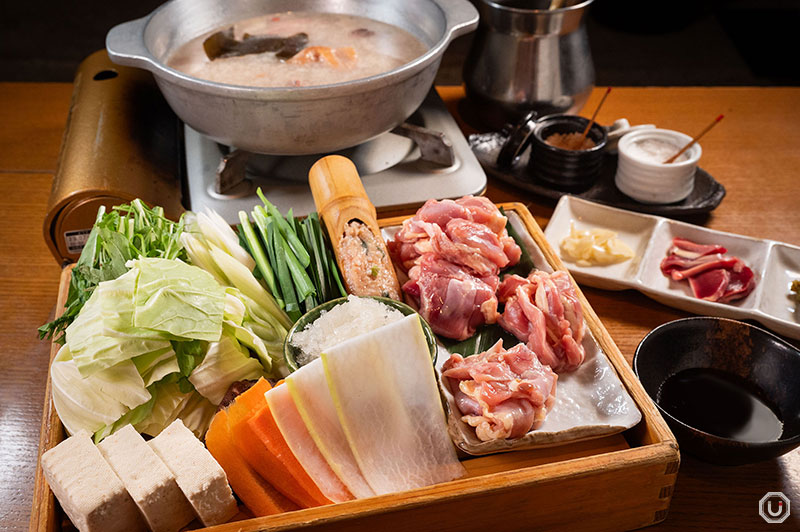
Whole Hakata Jidori Collagen Mizutaki Nabe (for two) at Hakata Jidori Fukuei Kumiai Shibuya
Rare and special nabe (game and blowfish)!
Beyond the common varieties, Japan has rare and luxurious hot pots—served on special occasions or reflecting local traditions.
Game meat nabe types
Botan-nabe (wild boar hot pot) is a famous game nabe. The name botan (peony) comes from the way the wild boar meat is traditionally arranged on the plate to resemble the flower. With rich flavor and unique texture, it’s enjoyed mainly in mountain regions.
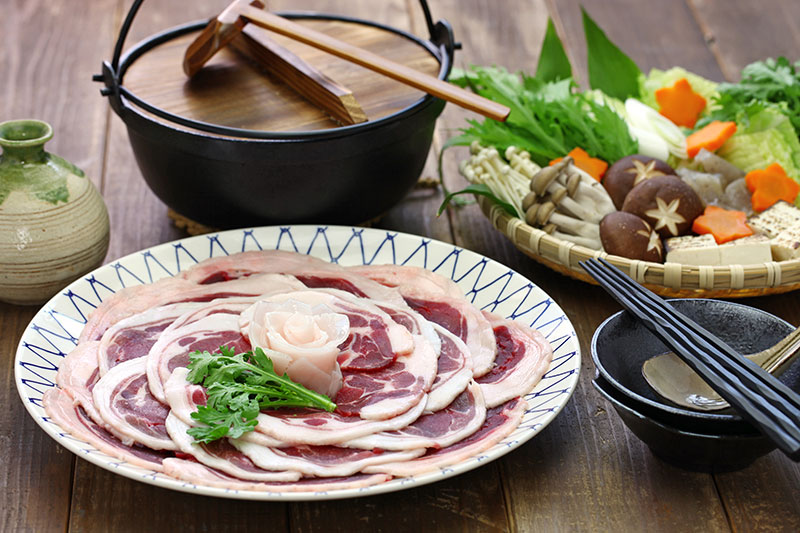
An image of botan-nabe
Other game options include venison (momiji-nabe), horse meat (sakura-nabe), and even bear meat hot pot. These game nabe let you experience Japan’s mountain-cuisine traditions.
Fugu-nabe (tecchiri)
Fugu-nabe (tecchiri) is a high-end pufferfish hot pot prepared safely despite the blowfish’s deadly poison. Shimonoseki in Yamaguchi Prefecture is especially renowned, with chefs holding special licenses.
Fugu’s delicate flavor and unique texture offer an incomparable culinary experience. Though expensive, it’s a pinnacle of Japanese cuisine—often enjoyed with ponzu and momiji-oroshi, and finished with zosui.

An image of fugu-nabe (tecchiri)
Conclusion
Japanese nabe dishes offer more than food—they are cultural experiences.
Sharing a hot pot strengthens bonds in a distinctly Japanese way, leaving lasting memories for travelers. During your winter trip, enjoy authentic nabe at restaurants or ryokan. Exploring nabe alongside sumo culture, Kyoto traditions, and regional specialties, can greatly enrich your journey.
Nabe is a familiar home-cooked favorite for Japanese, but it also carries deep history and cultural meaning. Trying different types helps you understand Japan’s diverse culinary culture and regional characteristics. As you share warm bowls, you can also appreciate a sense of Japanese hospitality.
